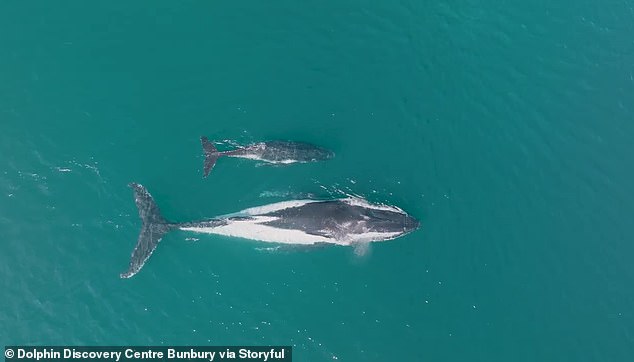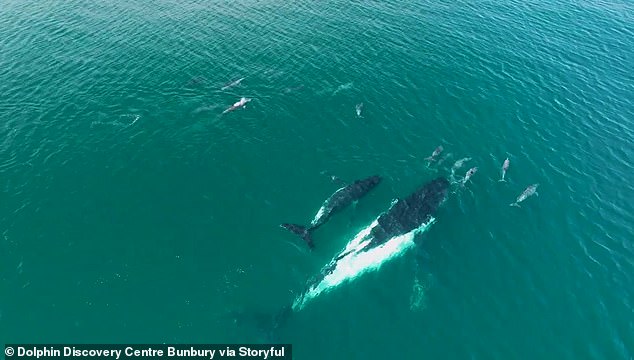Incredible moment humpback whale gives birth is captured on video for the first time – before pod make 5,000 mile voyage to their feeding grounds
The incredible moment a humpback whale gave birth was captured on camera for the first time – before the group made a 5,000-mile journey to their feeding grounds.
The majestic moment, shot in Lahaina, Hawaii, in 2021, was featured in The one from National Geographic new series, Incredible Animal Journeys.
This was the first time scientists had witnessed a complete birth of a humpback whale from start to finish.
Footage from National Geography shows the group swimming in sync before zooming in on the mother whale as she gives birth.
“We’ve been waiting for this for 25 years,” Rachel Cartwright, whale researcher with the Keiki Kohola Project, told National Geographic. “It’s never been seen before.”
The incredible moment a humpback whale gives birth was captured on camera for the first time – before the pod makes an 8,000-kilometre journey to their feeding grounds
The female whales travel to the Hawaiian Islands every year to give birth in “predator-free waters.”
Scientists have only seen glimpses or signs of a female whale giving birth, never the entire birth before.
“I’ve been getting a lot of calls from people saying they’ve seen a whale being born,” Stephanie Stack, chief research biologist at the Pacific Whale Foundation in Maui, told National Geographic.
‘And if we look into it a little, that is often not entirely the case. Often it’s just a whale resting, or a whale hanging out with its calf,” she added.
‘So I was really surprised when I looked at the images. That is amazing!’
The birth began at 3 p.m., when scientists spotted a group of whales congregating near the water’s surface.
One member of the crew went to investigate and saw a small tail peeking out from the female.
“At that moment we knew we had a possible birth,” Cartwright told National Geographic.
“We had people in the water until sunset,” she says. “But the lights had gone out and we didn’t think we were going to get anything new.”
Cartwright didn’t even realize what she had captured with her drone until she played it back later.
“What we saw in the footage is a large eruption of blood,” Cartwright said. “And then, two seconds later, we finally saw a calf.”
At one point, the males started blowing bubbles at the pregnant humpback whale – something scientists think could trigger the release of ‘feel-good hormones’ such as oxytocin.
“There’s a beautiful scene where the mother has her tail up and the little baby’s tail is sticking out, and the males go underneath and blow bubbles,” Cartwright said.
Onlookers were in awe of the incredible moment.
Someone said: ‘So beautiful and so valuable to see this. This is why our oceans must be kept clean and not destroyed, and why animals deserve to be respected, admired and protected.”

Parks and Wildlife Service WA (DBCA) received calls of a whale in distress at the same location

A pod of dolphins has guided a humpback whale and her calf back to their migration route near the coastline of Western Australia
Another said: ‘Wow, what a beautiful video. They are so intelligent. Very moved by the male humpback whale blowing bubbles to form a screen to give the female humpback whale some privacy. Thank you, National Geographic team!”
‘What a great photographer. I’ve never seen that before. As always, Nat Geo is number 1,” said a third.
Earlier this month, a pod of dolphins led a humpback whale and her calf back to their migration route in an extraordinary moment captured on camera.
The heartwarming interaction between the two species took place on October 18 near Bunbury Back Beach in Western Australia.
The Dolphin Discovery Center Bunbury used a drone to capture the rare encounter.
It shows a humpback whale, initially mistaken for a killer whale due to her dramatic black and white markings, while her calf swims alone in the ocean.
The pair had deviated from their migration route, but a pod of dolphins arrived and guided them back to the route.
